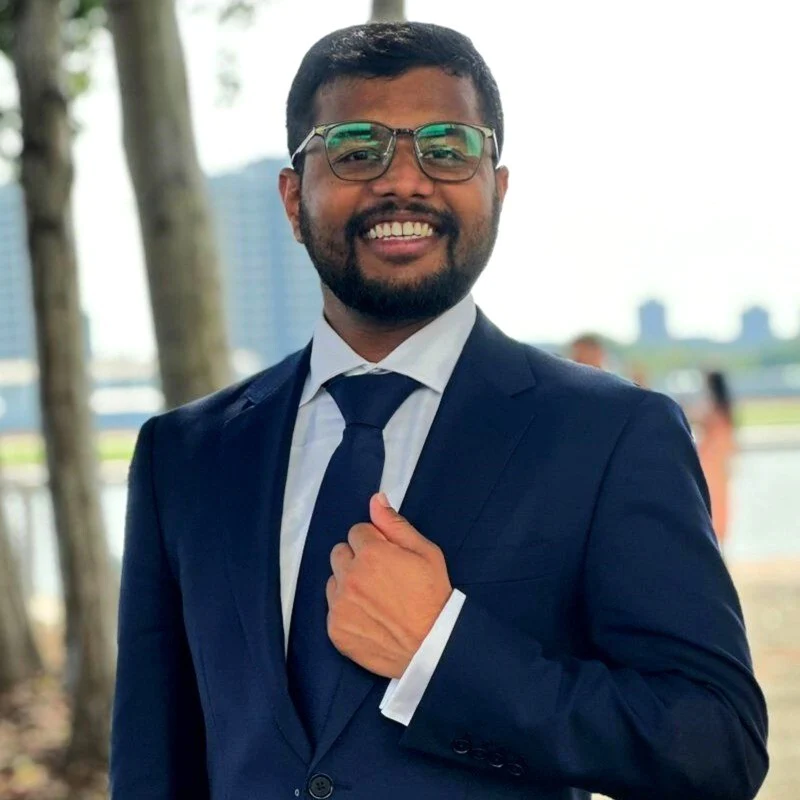Follow us:

 Instagram
Instagram

 Instagram
Instagram
Squamous Suture: In Depth Review
Posted on:
Nov 04, 2023
Authored by
Reviewed by

QA & Content Manager

×
Related products
The squamous suture is a crucial articulation in the human skull, often overlooked in early medical education but holding significant importance in both developmental biology and clinical practice. A fibrous joint that denotes the boundary between the temporal and parietal bones of the skull, the squamous suture is a labyrinthine line of cranial architecture, etched into the human anatomy. It is one of several sutures that allows for the flexibility and expansion necessary to accommodate the growing brain during infancy and childhood. The squamous suture is a symbol of human growth and development, a serrated line that is as much a part of our evolutionary story as it is a feature of our personal growth from infancy into adulthood. Defined by its scalloped, overlapping edges, which give it the appearance of the scales on a fish – hence the term ‘squamous’ – this suture is a unique hinge in the cranial skeleton. It is not merely a static feature; the squamous suture’s morphological changes throughout life are a testament to its dynamic nature within the skull’s anatomy.
Anatomical Location
Positioned on the lateral aspects of the skull, the squamous suture forms a bilateral landmark that is both a physical and symbolic divide between the temporal and parietal bones. This suture's location is strategically placed to allow for the distribution of mechanical force that occurs during mastication, as well as to provide a certain degree of mobility necessary for the skull's integrity. The location of the squamous suture is not only significant in terms of structural anatomy but also in its proximity to various vascular and nervous structures, which adds an extra layer of complexity to its clinical significance.Importance in Skull Structure and Development
The importance of the squamous suture extends beyond its physical presence; it plays a pivotal role in the skull's capacity to envelop and protect the brain. The suture's ability to absorb and redistribute mechanical forces is a testament to the skull's evolutionary sophistication. Furthermore, the squamous suture is indicative of the skull's developmental history in an individual, with its progressive fusion being a biological chronicle of age. Its integrity is paramount in maintaining cranial shape and, as such, it is a focus of numerous surgical procedures, where the suture’s state can be both a guide and a hindrance to intervention.Anatomical Description
The squamous suture, a sophisticated fibrous joint, articulates the temporal and parietal bones, two pivotal elements of the cranial puzzle. This suture’s anatomy is not a mere intersection of bones; it is a living map that records the history of an individual’s growth and a testament to the intricacies of human evolution.Bones Involved in the Squamous Suture
Temporal Bone
The temporal bone is a complex structure that houses the organs of hearing and balance. At its borders, the squamous suture forms a beveled, nearly translucent edge that interlocks with the parietal bone. This articulation allows for slight movement, which accommodates the stresses placed upon the cranium. The temporal region's involvement in the squamous suture is not merely passive; it is actively engaged in the dynamic process of cranial molding.Parietal Bone
The parietal bone, with its broad and curved surface, provides the canvas upon which the squamous suture is etched. It contributes to the formation of the cranial vault and plays a critical role in protecting the cerebral hemispheres. The parietal's articulation with the temporal bone via the squamous suture is a harmonious blend of form and function, a relationship that underscores the suture’s importance in cranial anatomy.Physical Characteristics of the Suture
Suture Morphology
Suture morphology is a study in natural design, with the squamous suture presenting a serrated pattern that evokes the craftsmanship of finely jointed woodwork. This intricate design is not without purpose; the interdigitations enhance the tensile strength of the suture, providing resilience to the forces exerted upon the skull.Suture Length and Breadth
The length and breadth of the squamous suture are not constants; they are variables that readjust as the individual matures. In infancy, the suture is longer and more pronounced, gradually shortening and becoming less distinct as the suture ossifies with age.Developmental Changes

Fetal and Neonatal Skull
In the fetal and neonatal skull, the squamous suture is a testament to potentiality. It is wide and flexible, characteristics that permit the overlapping of bones during birth and allow for rapid brain growth in the early years of life.Postnatal Development and Closure
As postnatal development proceeds, the squamous suture begins to tell the story of maturation. The once expansive suture narrows, signaling the gradual end of the brain’s rapid growth phase and the onset of suture ossification, a process that culminates in the firm union of the temporal and parietal bones.Variations and Anomalies
Common Anatomical Variations
Anatomical variations of the squamous suture are a mosaic of human diversity. These variations can range from the number of suture segments to the depth of suture interdigitation.Implications of Anomalous Development
Anomalous development of the squamous suture can have profound implications, ranging from benign variations with little clinical significance to serious conditions like craniosynostosis, which can affect cranial function and aesthetics.Physiological Significance
The squamous suture is more than a mere boundary between the bones of the skull; it is an active participant in the cranial physiology, influencing flexibility, protection, and expansion. The suture’s contribution to these physiological processes reflects the dynamic relationship between cranial anatomy and the functional needs of the brain.Role in Cranial Flexibility
The squamous suture is a bastion of cranial flexibility, a feature that is particularly crucial during the birthing process and early growth. It allows for subtle movements between the temporal and parietal bones, which can absorb and dissipate the mechanical stresses caused by impacts and masticatory forces. This flexibility is not an endless resource but is most prominent in early life when the suture is not fully ossified, indicating its role in developmental adaptability.Contribution to Brain Protection
Beyond flexibility, the squamous suture contributes significantly to the protection of the brain. Its interdigitated morphology can be likened to the crumple zones of modern vehicles, designed to absorb energy upon impact. This distribution of force away from the brain reduces the risk of trauma to the delicate neural tissues housed within the cranial vault. The squamous suture’s role in brain protection is a testament to the evolutionary design of the human skull, where form meets function in the preservation of the organism's most vital organ.Impact on Cranial Volume Expansion
The squamous suture’s impact on cranial volume expansion is a narrative of growth and change. During the critical years of brain development, the suture permits the outward curving of the parietal and temporal bones, accommodating the rapid increase in brain size. The flexibility of the suture during these formative years is essential, allowing for the skull to expand while maintaining its protective function. The progressive ossification of the squamous suture marks the end of this period of rapid expansion, underscoring its role in the temporal orchestration of cranial development.Clinical Relevance
The clinical relevance of the squamous suture extends into numerous medical disciplines, reflecting its fundamental role in both health and disease. Pathological conditions affecting the suture can have profound implications for cranial integrity, neurological function, and overall well-being. Surgical procedures involving the squamous suture require a nuanced understanding of its anatomy and physiology, while diagnostic imaging plays a pivotal role in evaluating its status and guiding clinical decision-making.Pathological Conditions Involving the Squamous Suture
Craniosynostosis
Craniosynostosis, a condition where one or more of the cranial sutures fuse prematurely, can significantly affect the squamous suture. This premature fusion alters the normal growth pattern of the skull, which can lead to increased intracranial pressure and an abnormal head shape. The squamous suture, when involved in craniosynostosis, requires careful clinical attention to mitigate potential complications such as visual impairment and developmental delays.Fractures and Their Implications
Fractures involving the squamous suture are of particular concern due to their proximity to vital neurovascular structures. Such fractures can result from trauma and may lead to intracranial hemorrhage, cerebrospinal fluid leaks, or even seizure disorders. The management of these fractures necessitates a multidisciplinary approach, with the squamous suture’s integrity being a critical factor in the prognosis of traumatic brain injuries.Squamous Suture in Surgical Procedures
Neurosurgical Access
In neurosurgery, the squamous suture is a landmark for surgical access to various intracranial regions. Its location and relation to other cranial features dictate the approach surgeons take during procedures, balancing the need for accessibility with the preservation of suture integrity and function.Craniotomy and Craniectomy Considerations
During craniotomies and craniectomies, the squamous suture presents both opportunities and challenges. Surgeons must navigate around this suture to prevent postoperative complications such as suture diastasis or infection. The decision-making process for these procedures is intricate, with the squamous suture’s health being a deciding factor in surgical outcomes.Diagnostic Imaging of the Squamous Suture
Radiology in Suture Examination
Radiology plays a fundamental role in examining the squamous suture, with techniques such as X-rays and CT scans providing valuable insights into its structure. These imaging modalities can identify conditions such as suture synostosis or fractures, informing both diagnosis and treatment plans.Advanced Imaging Techniques
Advancements in imaging technology have further enhanced the evaluation of the squamous suture. MRI and 3D reconstruction techniques offer detailed visualization, allowing for a more comprehensive assessment of the suture in relation to its surrounding anatomy and pathology.Squamous Suture in Forensic Science


















 Rated Excellent by 26,523+ Reviews
Rated Excellent by 26,523+ Reviews